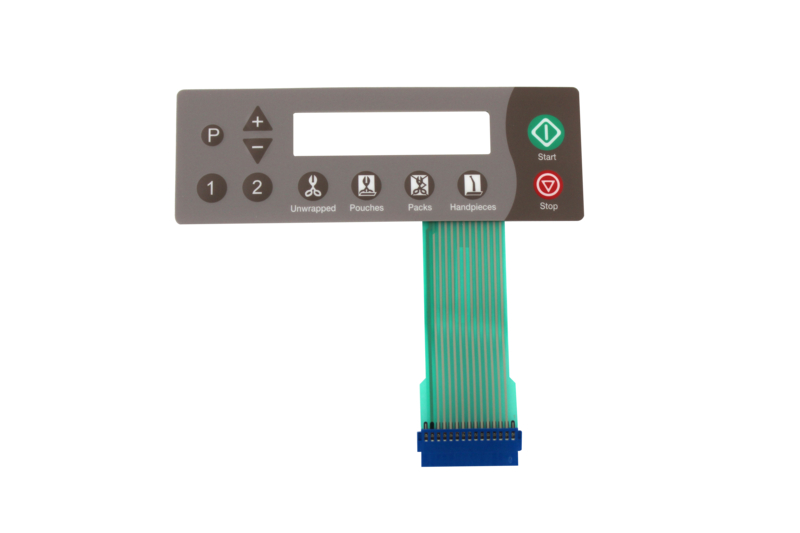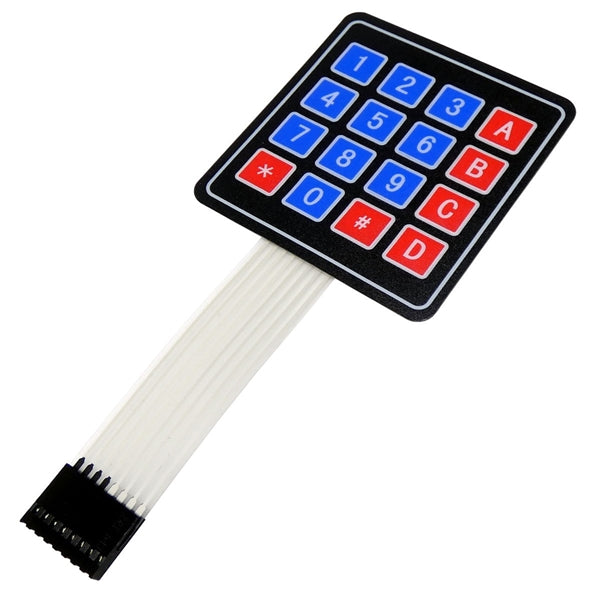Top manufacturers often rely on a skilled membrane switch manufacturer to deliver high-quality results.
Top manufacturers often rely on a skilled membrane switch manufacturer to deliver high-quality results.
Blog Article
Everything About Membrane Layer Switch: Recognizing Its Layout and Functionality
When you consider the control user interfaces in modern gadgets, membrane layer switches commonly come to mind. These parts are more than just switches; they blend layout and capability effortlessly. Comprehending exactly how they function and what makes them effective can transform your viewpoint on everyday electronic devices. But, there are subtleties to their design and performance that you may not recognize. Let's explore what sets membrane switches over apart from other control systems.
What Are Membrane Layer Switches?

Their seamless nature makes them easy to tidy and resistant to dust and moisture, a crucial function in numerous environments. Membrane switches can likewise be personalized concerning form, size, and graphics, permitting suppliers to develop distinct user interfaces customized to specific products. Plus, they're lightweight and thin, which helps in minimizing the overall mass of gadgets. Overall, membrane layer buttons play a substantial function in improving customer experience throughout a large variety of applications.
Exactly How Membrane Layer Changes Job
When you press a trick on a membrane button, it activates a simple yet efficient system. membrane switch manufacturer. The top layer, often made of flexible material, pushes down onto a conductive layer underneath it.
You'll notice that the tactile feedback differs based upon the switch design, offering either a soft click or a more pronounced response. Once you launch the trick, the membrane go back to its initial position, reopening the circuit and quiting the signal. This process takes place practically instantly, guaranteeing a receptive individual experience.
Membrane buttons are prominent because of their resilience and resistance to dust and dampness, making them perfect for different applications, from house devices to medical gadgets. Comprehending this procedure aids you value their widespread use.
Trick Components of Membrane Switches
Comprehending the vital parts of membrane layer buttons is essential for grasping their performance and layout. At the core, you'll locate the visuals overlay, which provides the visual interface for users. Under that, there's a spacer layer that divides the circuit layers, ensuring that they do not make contact up until pushed. The circuit layer is where the magic takes place; it contains conductive traces that complete the circuit when you push the button. One more crucial component is the sticky support, allowing the button to comply with surfaces securely. The safety layer guards against environmental factors and wear, prolonging the button's life expectancy. Each part plays a substantial role in making certain trusted performance and individual communication. By recognizing these parts, you'll obtain insight into just how membrane layer switches run and their value in different applications.
Materials Made Use Of in Membrane Layer Switch Over Style
The performance and durability of membrane layer switches over heavily depend on the products used in their layout. You normally encounter polyester and polycarbonate as main substratums because of their excellent toughness and adaptability. These materials withstand scratches and chemicals, making them ideal for requiring environments.
The conductive layers commonly make use of silver or carbon, selected for their dependability and conductivity. membrane switch manufacturer. Silver provides remarkable performance, while carbon is a cost-efficient alternative. For the overlay, you might take into consideration a matte or shiny finish, relying on your visual needs and individual experience
Adhesives play an important function also; they bond layers securely and guarantee longevity. Ensure to pick adhesives that hold up against environmental factors like temperature level and humidity. Lastly, do not overlook the relevance of an excellent printing strategy for graphics, as it boosts both functionality and aesthetic charm. Selecting the right products will ensure your membrane button stands the examination of time.
Layout Factors To Consider for Membrane Switches
While creating membrane layer buttons, it's vital to take right into account various variables that affect their capability and customer experience. Begin by concentrating on the layout and button size; make particular they're intuitive and simple to navigate.
Verify your design suits ecological elements, like dampness or temperature level variants, which could affect efficiency. By meticulously taking into consideration these elements, you'll develop a membrane button that enhances usability and contentment.
Applications of Membrane Buttons
Membrane layer switches are flexible components found in various applications, from industrial devices to consumer electronics. You'll see their influence in makers that need sturdy interfaces and in gadgets that benefit from smooth designs. Recognizing these applications helps you value the performance and practicality of membrane layer buttons in day-to-day technology.
Industrial Equipment Usage
When you're wanting to enhance the capability of industrial equipment, membrane switches use a reputable solution that incorporates resilience with straightforward layout. These buttons are ideal for harsh settings, giving resistance to dirt, dampness, and chemicals. You'll find them in control panels for manufacturing machines, a/c systems, and clinical tools, where accuracy and responsiveness are vital. Their reduced account suggests they fit flawlessly right into various devices, saving useful room while keeping simplicity of usage. With customizable graphics and backlighting choices, you can produce an intuitive interface for operators, improving effectiveness and safety. Plus, their lengthy lifespan decreases upkeep prices, making them a clever financial investment for Resources your industrial applications. Accept membrane layer buttons to simplify your procedures and improve general efficiency.
Customer Electronics Combination
In the domain name of customer electronic devices, membrane layer buttons play an essential role in enhancing customer interaction and tool functionality. Membrane layer switches also ensure longevity and resistance to dust and wetness, extending the life expectancy of your electronics. By selecting membrane buttons, you boost not simply the performance but additionally the design of your gadgets, making day-to-day communications smooth and enjoyable.
Benefits and Downsides of Membrane Switches
While membrane switches use a range of advantages, they likewise come with some disadvantages that you ought to think about. One substantial advantage is their portable design, making them perfect for space-constrained applications.

Membrane layer switches can have a much shorter life-span contrasted to mechanical buttons, especially under hefty use. They can also be much less responsive, which could affect user feedback during procedure. Balancing these pros and cons will certainly aid you establish if membrane layer switches are the ideal fit for your job.
Regularly Asked Questions
The Length Of Time Do Membrane Changes Usually Last?
Membrane layer changes commonly last in between 5 to one decade, depending on usage and environmental problems. You'll want to assess aspects like wear, direct exposure to moisture, and temperature level variations to determine their longevity successfully.
Can Membrane Layer Changes Be Customized for Details Styles?
Yes, you can personalize membrane layer buttons to fit specific designs (membrane switch manufacturer). You'll have the flexibility to choose colors, shapes, and layouts that match your task's requirements, ensuring they blend seamlessly click resources with your general important link aesthetic
What Is the Cost Array for Membrane Switch Manufacturing?
The cost range for membrane button manufacturing generally falls in between $1 and $10 each, relying on aspects like style intricacy, quantity, and products. You can obtain quotes from makers to discover the most effective choice.

Are Membrane Switches Water-proof or Resistant?
Membrane layer buttons can be developed to be water resistant or immune, relying on materials utilized and building approaches. If you require them for wet environments, ensure you define those demands throughout the layout procedure.
Just How Do Membrane Changes Compare to Conventional Buttons?
Membrane layer buttons are normally thinner and more versatile than traditional buttons, supplying a streamlined layout. They're commonly simpler to clean up and incorporate, but could not supply the tactile feedback you're used to with mechanical options.
Final thought

Report this page